on-page optimization
How Do I Perform On-Page Optimization

What is On-Page SEO?
On-page SEO refers to the process of optimizing individual web pages to rank higher in search engine results and attract more relevant traffic. It involves optimizing content, HTML source code, and website structure to improve visibility and user experience.
Why is On-Page SEO Important?
- Improves Search Rankings: Helps search engines understand page relevance.
- Enhances User Experience (UX): Creates a better experience for visitors.
- Increases Organic Traffic: Drives more potential customers to your site.
- Boosts Conversion Rates: Optimized pages lead to higher engagement and sales.
My Step by Step Process in Conducting On-Page SEO Optimization
1. Optimize Title Tags & Meta Descriptions
- Title Tag: Keep it under 60 characters, include target keywords, and make it compelling.
- Meta Description: Keep it between 150-160 characters, include relevant keywords, and add a call-to-action.
- Example:
Title: “SEO Services | Increase Website Traffic & Google Rankings”
Meta Description: “Boost your website’s search rankings with expert SEO services. Get more traffic & leads today!”
2. Use Proper Header Tags (H1-H6)
- H1 Tag: Use one per page, containing the primary keyword.
- H2-H6 Tags: Structure content for readability and include related keywords.
- Example:
H1: “The Ultimate Guide to On-Page SEO”
H2: “Why On-Page SEO Matters”
3. Optimize Content for Keywords & Readability
- Keyword Placement: Naturally include primary and related keywords in the first 100 words, headings, and throughout the content.
- Avoid Keyword Stuffing: Write for humans, not just search engines.
- Use Bullet Points & Short Paragraphs: Improve readability and user experience.
- Content-Length: Aim for 1,000+ words for in-depth coverage.
4. Internal & External Linking
- Internal Links: Link to relevant pages within your site to improve navigation and SEO.
- External Links: Link to high-authority sources to boost credibility.
- Anchor Text: Use descriptive and keyword-rich text.
5. Image Optimization
- Alt Tags: Add descriptive text with keywords for accessibility and SEO.
- File Names: Rename images with relevant keywords (e.g., “on-page-seo-checklist.webp”).
- Compress Images: Use tools like TinyPNG to reduce file size and improve page speed.
6. Improve URL Structure
Short & Descriptive: Keep URLs concise and include target keywords.
Use Hyphens, Not Underscores: Example:
✅ example.com/on-page-seo-guide
❌ example.com/onpageseoguide
7. Enhance Page Speed & Mobile Optimization
(UX)
- Use Google PageSpeed Insights to check performance.
- Compress Images & Enable Caching to reduce load time.
- Ensure Mobile-Friendliness with responsive design.
8. Add Structured Data (Schema Markup)
- Schema.org Markup: Helps search engines understand your content.
- Use for: Reviews, FAQs, Products, Events, and more.
- Example: Adding FAQ schema can get your page featured in Google’s Rich Results.
9. Optimize for User Engagement
Clear Call-to-Actions (CTAs): Encourage users to take action (subscribe, buy, contact).
Improve Dwell Time: Use engaging visuals, videos, and scannable content.
Reduce Bounce Rate: Make content relevant, fast-loading, and easy to navigate.
10. Monitor & Adjust SEO Strategies
- Google Analytics & Search Console: Track performance and make data-driven adjustments.
- A/B Testing: Experiment with titles, descriptions, and content formats.
- Regular Updates: Keep content fresh and aligned with search intent.
On-page SEO is a foundational step in optimizing a website for search engines and users. By implementing these strategies, businesses can improve rankings, drive traffic, and increase conversions. Regular audits and updates ensure sustained SEO success.
